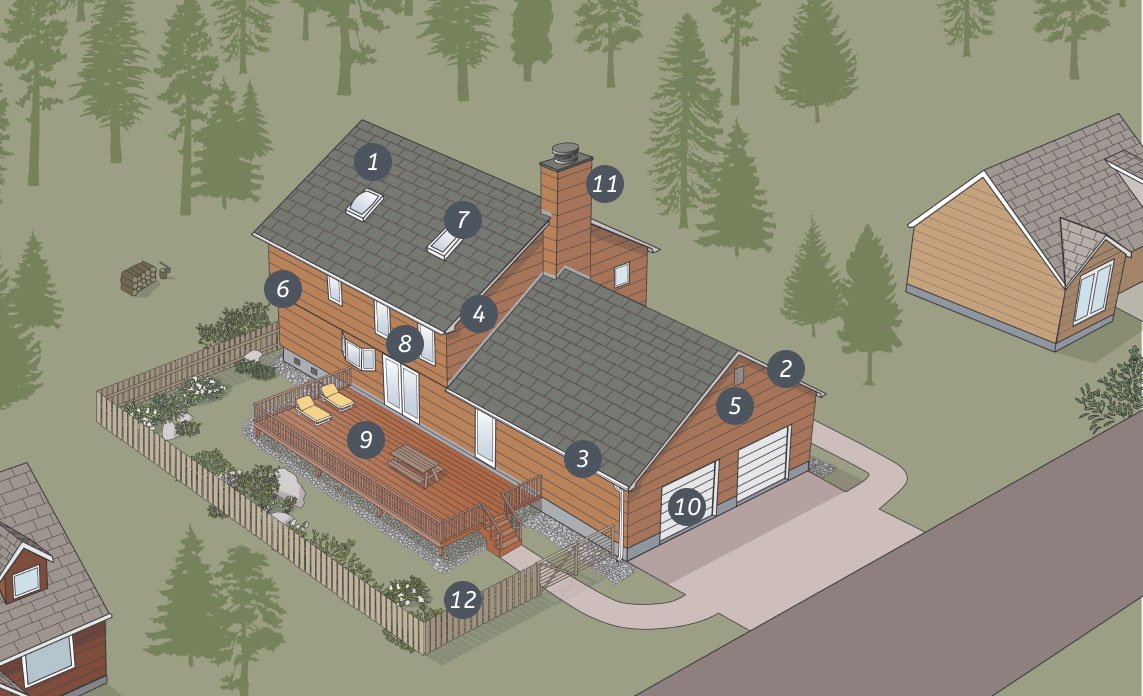Home Hardening
Home Hardening:
Preparing for Wildfire Resilience
As wildfires grow more intense and frequent across the western United States, especially in fire-prone areas like California, home hardening has become an essential step in protecting life, property, and community. “Home hardening” and "structure hardening" refer to retrofitting or designing a structure and its immediate surroundings to resist ignition from embers, radiant heat, and direct flame. Research shows that homes built or upgraded with fire-resistant features have a much greater chance of surviving a wildfire.
Why Home Hardening Matters
In most wildfires, it’s not the main fire front that destroys homes — it’s wind-driven embers that travel miles ahead of the flames. These embers can ignite roofs, gutters, decks, and even landscaping. Home hardening significantly reduces these vulnerabilities, giving your home a better chance of withstanding a fire, even if firefighters cannot reach it in time.
Start with What You Can
Home hardening doesn’t have to happen all at once. Start with small, cost-effective steps — cleaning gutters, replacing vent screens, or trimming vegetation near the home. Over time, make bigger changes like upgrading roofing or siding. Grants and rebates may become available.
Key Elements of Home Hardening
Use this list as a guide to prioritize improvements based on cost and impact.
-
Keep gutters and roofs clear of flammable materials. Consider ember-resistant gutter guards.
Cost: FREE
-
Keep porches, decks, and outdoor spaces free of combustible materials.
Cost: FREE
-
Install 1/8-inch metal mesh screens or ember-resistant vents to prevent ember intrusion.
Cost: $
-
Add spark arrestor caps over chimney and stovepipe openings.
Cost: $
-
Use solid-core doors and ensure proper sealing.
Cost: $
-
Enclose or seal eaves using fiber cement board or high-quality 5/8-inch plywood to prevent ember buildup.
Cost: $$
-
Choose double-pane or tempered-glass windows; keep skylights clear and branches trimmed.
Cost: $$
-
Build with fire-resistant materials, separate structures from the home, and clear debris underneath decks.
Cost: $$$
-
Use noncombustible siding such as stucco, brick, or cement board.
Cost: $$$
-
The roof is your most vulnerable surface. Use Class A fire-rated materials (asphalt, metal, tile, concrete). Inspect regularly for damage.
Cost: $$$
A Safer Future
Home hardening is not just a personal precaution — it’s a community responsibility. When neighborhoods commit to fire-safe practices, the overall risk of catastrophic loss is reduced. Combined with evacuation planning and defensible space, home hardening is a vital pillar of wildfire preparedness.
Learn More
-

Home Hardening
CAL FIRE
-

Preparing Homes for Wildfire
NFPA
-

Home Hardening
Fire Safe Council for Monterey County
Fire Adapted Big Sur is a program of the Community Association of Big Sur



